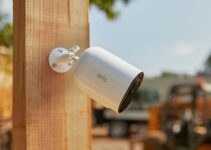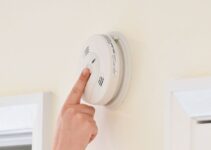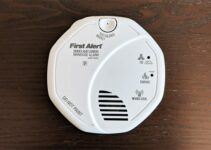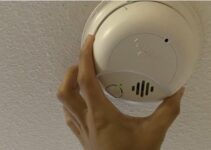When it comes to implementing an effective surveillance system, the right camera mounting option plays a crucial role in maximizing coverage, optimizing camera angles, and ensuring the longevity of the equipment.
Hikvision, a leading provider of video surveillance products, offers a wide range of camera mounting options suitable for various environments and applications.
Hikvision Camera Mounting Options & Tips
In this article, we will explore the most common Hikvision camera mounting options and provide essential tips for successful installations.
1. Wall Mount
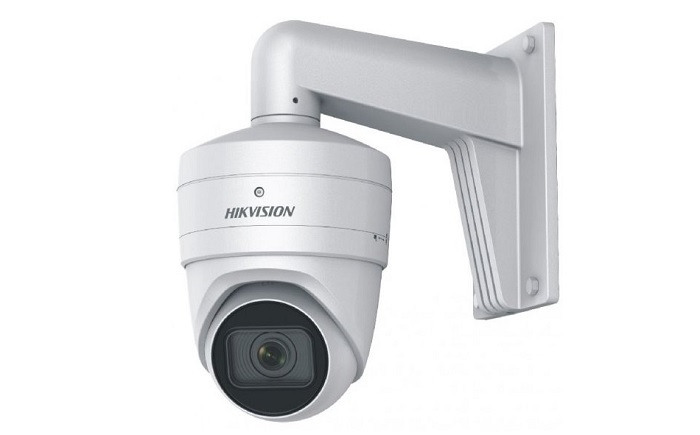
The wall mount is the most common and versatile mounting option for Hikvision cameras. It allows for easy installation on various surfaces such as brick, concrete, and wood, making it suitable for both indoor and outdoor installations.
Wall mounts provide a fixed position for the camera, ensuring a stable view of the surveillance area. They are generally designed to be adjustable, allowing users to achieve the desired camera angle and coverage.
Wall mounts are popular due to their simplicity, affordability, and effectiveness in most scenarios.
Tips for Wall Mount Installation
- Choose a sturdy wall that can support the weight of the camera and mount.
- Ensure the wall mount is positioned at the desired camera angle to cover the intended area effectively.
- Use wall anchors or appropriate screws to secure the mount firmly to the wall.
2. Ceiling Mount
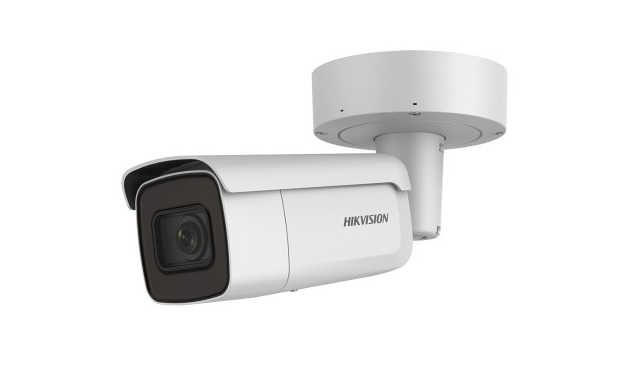
Ceiling mounts are specifically designed for indoor surveillance, offering a discreet and unobtrusive placement for the camera. They are ideal for areas where wall space is limited or where a more inconspicuous installation is desired.
By mounting the camera on the ceiling, it can capture overhead views, providing a comprehensive perspective of the monitored space. Ceiling mounts are commonly used in indoor settings such as offices, retail stores, and hallways.
Tips for Ceiling Mount Installation
- Identify the optimal location on the ceiling that provides the desired surveillance coverage.
- Use ceiling brackets or pendant mounts to securely attach the camera to the ceiling.
- Ensure the camera is positioned level and aligned with the area of interest.
3. Pole Mount
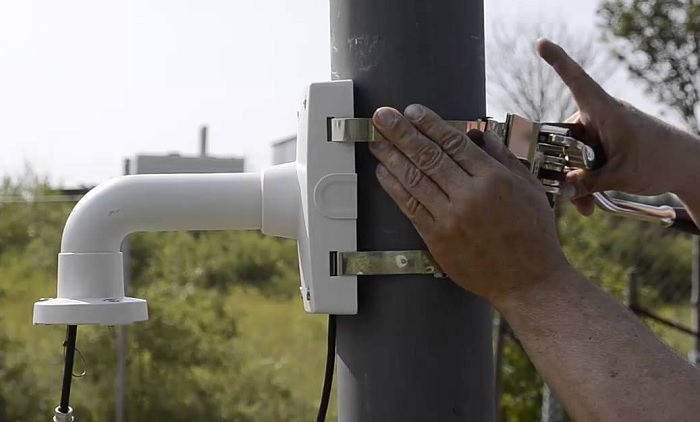
For outdoor installations that require covering a larger area or need a higher vantage point, pole mounts are an excellent choice. They allow cameras to be securely attached to poles or other vertical surfaces.
Pole mounts are particularly useful for monitoring parking lots, outdoor spaces, and large open areas. These mounts come in various sizes to accommodate different camera types and can be adjusted to achieve the optimal viewing angle.
Tips for Pole Mount Installation
- Select a sturdy and appropriate pole that can support the weight of the camera and mount.
- Consider the camera’s height and angle to achieve optimal coverage of the target area.
- Ensure the pole is securely anchored to the ground to withstand external forces like wind and weather.
4. Junction Box Mount
The junction box mount is used to provide additional protection for the camera’s power supply and wiring. It serves as a housing for the camera, safeguarding it from environmental factors like rain, dust, and physical damage.
Junction boxes simplify cable management, ensuring a neat and organized setup. They are typically utilized for outdoor installations, especially when the camera is exposed to harsh weather conditions or potential vandalism.
Tips for Junction Box Mount Installation
- Choose a weatherproof junction box suitable for the camera model and environmental conditions.
- Use waterproof cable connectors to prevent water ingress and maintain the camera’s functionality.
- Position the junction box close to the camera to minimize cable runs and reduce the risk of damage.
5. PTZ (Pan-Tilt-Zoom) Mount
The PTZ mount is specifically designed for cameras with Pan-Tilt-Zoom capabilities. PTZ cameras can move horizontally (pan), vertically (tilt), and zoom in and out, offering flexibility in surveillance coverage.
To ensure smooth and stable movements, PTZ mounts are built sturdy and robust. They are commonly used in applications where operators need to actively control the camera’s movements, such as in security control rooms or large-scale monitoring setups.
Tips for PTZ Mount Installation
- Install the PTZ mount on a stable surface to prevent excessive vibrations during camera movements.
- Check the weight and load capacity of the PTZ mount to ensure it can support the camera’s size and features.
- Conduct thorough testing of PTZ movements to ensure they function smoothly and accurately.
What are the different mounting types of CCTV cameras?
CCTV cameras can be mounted using various methods, each catering to specific installation requirements. Common mounting types include:
- Wall Mount: Cameras are fixed to walls and offer stable coverage of specific areas.
- Ceiling Mount: Cameras are installed on ceilings, providing unobtrusive and discreet surveillance.
- Pole Mount: Cameras are attached to poles or vertical surfaces, ideal for outdoor areas with extended coverage needs.
- Corner Mount: Cameras are fixed on corners to cover two intersecting walls or hallways effectively.
- Pendant Mount: Cameras hang from the ceiling, offering flexibility in adjusting the camera’s position and angle.
- Junction Box Mount: Cameras are placed inside a protective junction box, safeguarding them from environmental elements.
- In-ceiling Mount: Cameras are installed inside ceiling tiles, allowing for hidden and covert surveillance.
What is the weakness of Hikvision cameras?
While Hikvision cameras are widely renowned for their quality and features, they do have a few potential weaknesses:
- Cybersecurity Concerns: Like any IoT device, Hikvision cameras may be vulnerable to cyberattacks if not adequately secured or regularly updated with the latest firmware.
- Privacy Concerns: As with any surveillance system, there are privacy concerns related to the use of Hikvision cameras. Proper placement and responsible use are essential to respect individual privacy rights.
- Compatibility: Integrating Hikvision cameras with third-party software or systems may require additional effort due to proprietary protocols.
Conclusion
Choosing the right mounting option for Hikvision cameras significantly impacts the overall effectiveness of a surveillance system. Whether it’s a wall mount for stability, a ceiling mount for discreetness, a pole mount for wide coverage, a junction box for protection, or a PTZ mount for dynamic monitoring, each option serves a specific purpose.
By following the provided tips for installation, users can optimize camera positioning, enhance surveillance efficiency, and create a more secure environment. Remember to consider the specific requirements of the surveillance area, and if in doubt, seek professional assistance for a successful camera mounting process.
